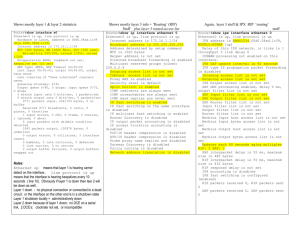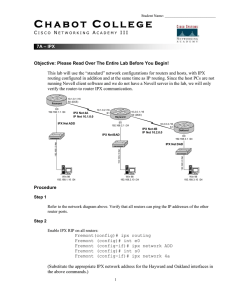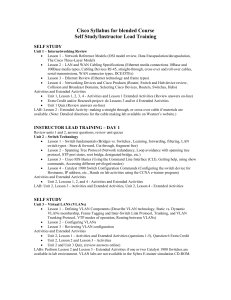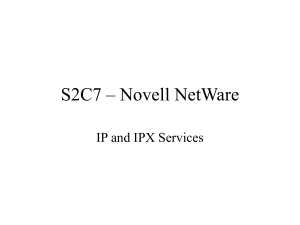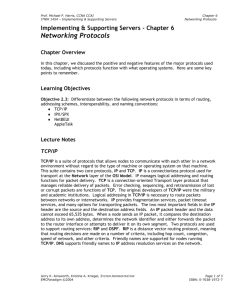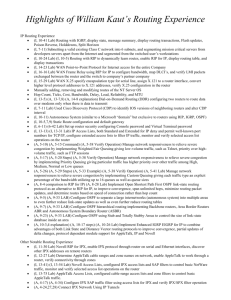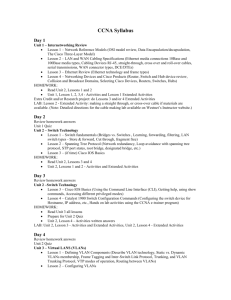Internet Packet eXchange Protocol (IPX) Network
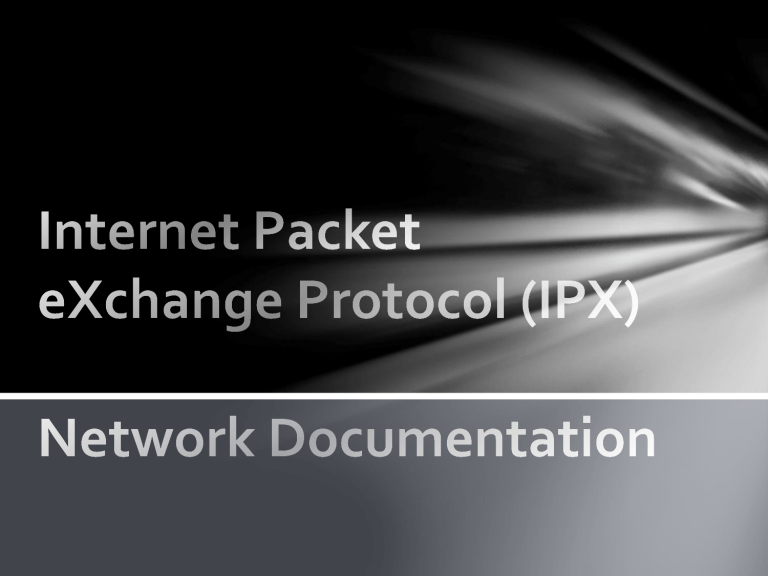
Internet Packet eXchange Protocol
(IPX) Introduction
Internetwork Packet Exchange (IPX) is the OSI-model Network layer protocol in the IPX/SPX protocol stack.
The IPX/SPX protocol stack is supported by Novell's NetWare network operating system. Because of Netware's popularity through the late 1980s into the mid 1990s, IPX became a popular internetworking protocol. Novell derived IPX from Xerox Network Systems' IDP protocol.
IPX usage is in general decrease as the boom of the Internet has made
TCP/IP nearly universal. Computers and networks can run multiple network protocols, so almost all IPX sites will be running TCP/IP as well to allow for
Internet connectivity. It is also now possible to run Novell products without
IPX, as they have supported both IPX and TCP/IP since NetWare reached version 5 in late 1998.
IPX Addressing
IPX Addressing
IPX addressing defines the internetwork, a collection of LANs connected by routers, bridges, and so forth.
IPX packet headers require both source and destination addresses. These designate the sender and the receiver of the packet respectively.
IPX Internetwork Address Components:
Address Byte Length
Network
Node
Socket
4 bytes
6 bytes
2 bytes
Description s
Identifies a specific network or
LAN on an IPX internetwork
Identifies individual nodes, or computers, on a network or
LAN.
Identifies a process or function operating within a node. A socket is identified by a unique number
Service Advertising Protocol
The Service Advertising Protocol (SAP) is included in the Internetwork
Packet Exchange (IPX) protocol. SAP makes the process of adding and removing services on an IPX internetwork dynamic. SAP is maintained by
Novell.
As servers are booted up, they may advertise their services using SAP; when they are brought down, they use SAP to indicate that their services will no longer be available. IPX network servers may use SAP to identify themselves by name and service type. All entities that use SAP must broadcast a name and Service Type that (together) are unique throughout the entire IPX internetwork. This policy is enforced by system administrators and application developers.
Novell Routing
There are three types of routers:
Internal router: This exists within a file server and can have up to 4 NICs with each one having to have a unique network address as well as the router itself having a unique internal address.
Dedicated external router: This can be a normal DOS PC and have up to 4
NICs each one having a unique network address, the PC can no longer be used as a workstation and there is no need for an internal network address.
Non-dedicated external router: This is the same as above but must have a unique internal address, it can be used as a workstation.
Monitoring and Managing an IPX
Network
Managing an IPX Network is similar to managing a TCP/IP network. Many commands are used to check the status of your network adapters among other things.
Refer to the handout for more in depth information.
Using the IPX Ping Command
From a Cisco switch you can test an IPX ping. To check host reachability and network connectivity, use the ping privileged EXEC command:
#ping [ipx] [network.node] ipx network.node
(Optional) Specifies the IPX protocol.
(Optional) Address of system to ping
To check host reachability and network connectivity, use the ping ipx user
EXEC command.
>ping ipx {host | address} ipx host address
Specifies the IPX protocol.
Host name of system to ping.
Address of system to ping.
Network Documentation
Network Documentation is a very key thing to do when you’ve setup a network. You may know the network back to front in your own mind, you might know all the passwords, ports and particular setups. In the case that you leave the company or you aren’t supporting them anymore the client needs a copy of documentation that includes all current information on everything in the network, right down to all the client computers on the network. An example of network documentation being needed would be the scenario where the network administrator leaves the company and now no one can log into the server. If the server password was documented this issue would not have occurred at all.
It also makes your job easier to keep track of all the vital details in a network.
Elements of Network Documentation
• Network topology—This is usually done in the form of a diagram that shows the major network nodes, such as routers, switches, firewalls, and servers, and how they are all interconnected. Normally, printers and workstations are not included.
• Server information—This is all of the information on servers that you will need to manage or administer them, such as name, functions, IP address, disk configuration, OS and service pack, date and place of purchase, warranty, and so forth.
• Router and switch port assignments—This includes detailed information on WAN configuration, VLANs, or even the assignment of a port to a network node via the patch panel.
• Configuration of network services—Network services, such as DNS,
WINS, DHCP, and RAS, are critical to the operation of the network. You should describe in detail how they are structured. Although it would be possible to derive that information by inspecting the servers, the point is to save that time by having it documented in an easy-to-decipher format.
Elements of Network Documentation
Continued
• Domain policies and profiles—You can restrict the capabilities of network users with the Policy Editor in Windows NT or with Group Policies in
Windows 2000. You can also create roaming profiles that are stored on a server rather than on local machines. This kind of configuration, if used, should be documented.
• Mission-critical applications—You must document how these are maintained, as well as what typically goes wrong with them and how you resolve problems.
• Procedures—This in itself can be a major undertaking. Procedures are basically the means by which we carry out policies, and they can be quite extensive. For instance, a policy can state, “The network shall be secure against unauthorized users.” However, it takes a great deal of effort to implement that policy. There are procedures for the firewall, for network protocols, passwords, physical security, and so forth. You would probably also have procedures for dealing with problems that are reported by users and for routine maintenance of the servers.
Practical
Setting up Server 2003
We will be setting up Server 2003, beginning from the setup of Server 2003 and ending with the configuration of core Server 2003 roles.
• Install Server 2003 as instructed.
• Setup a static IP.
• Setup Active Directory.
• Setup DNS.
• Setup DHCP.
• Connect Windows XP computer to the domain.
